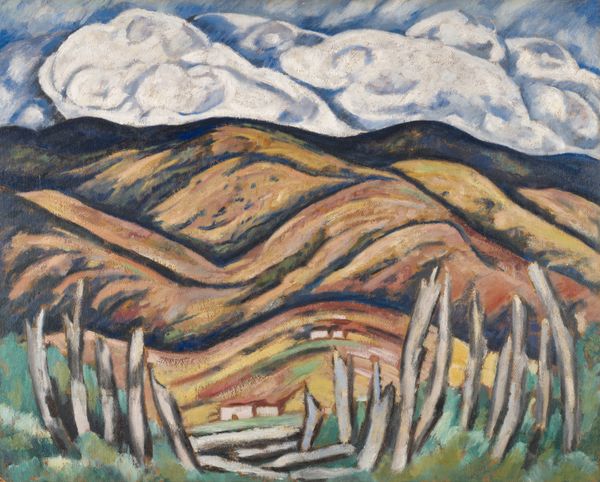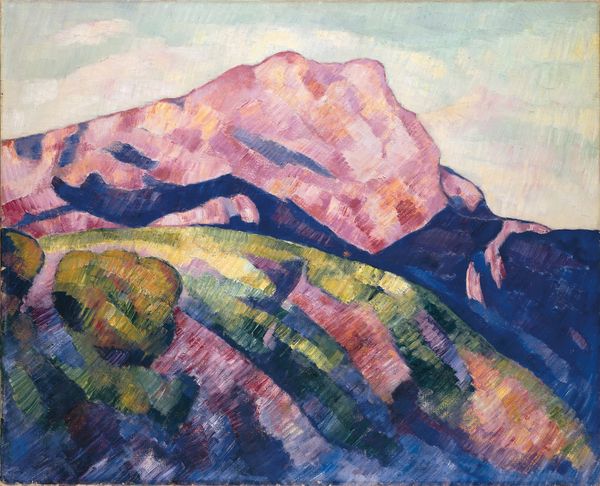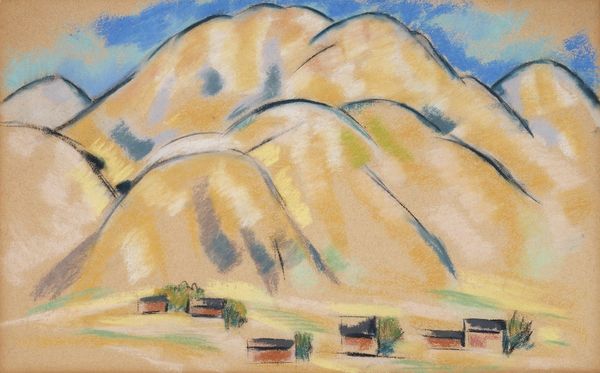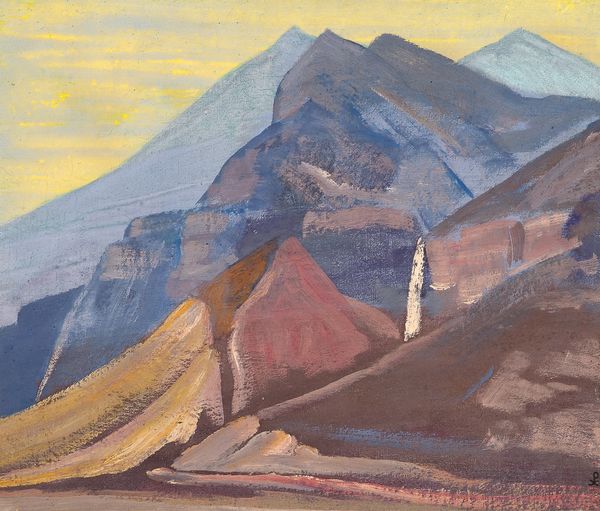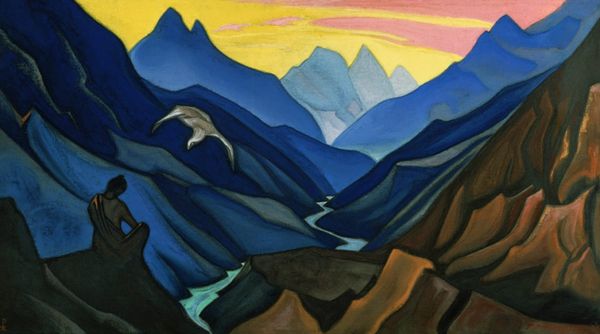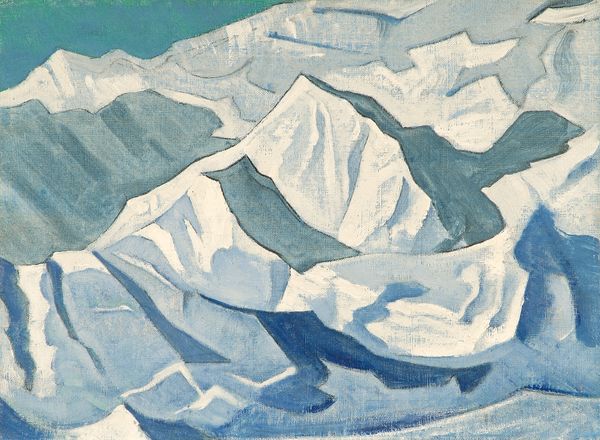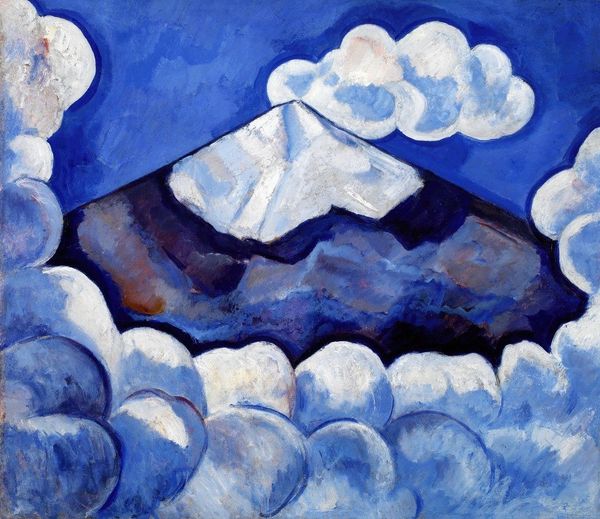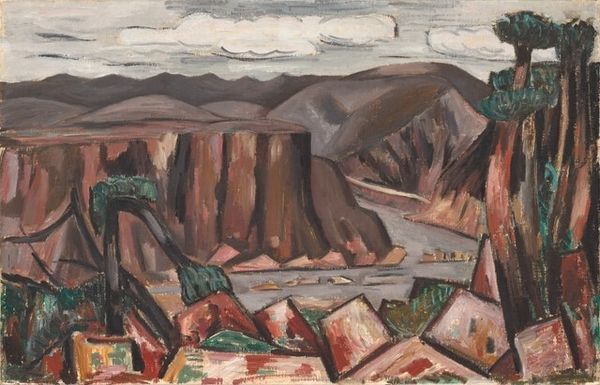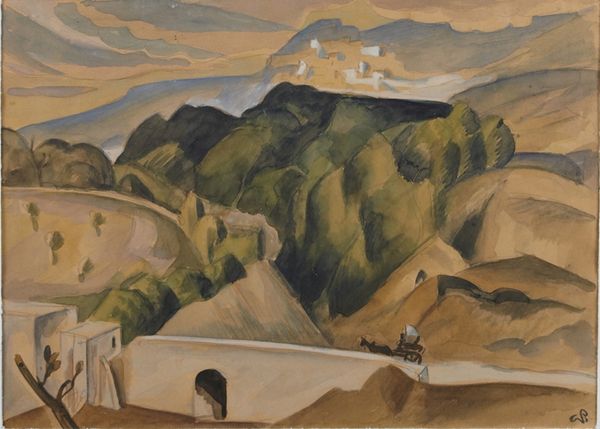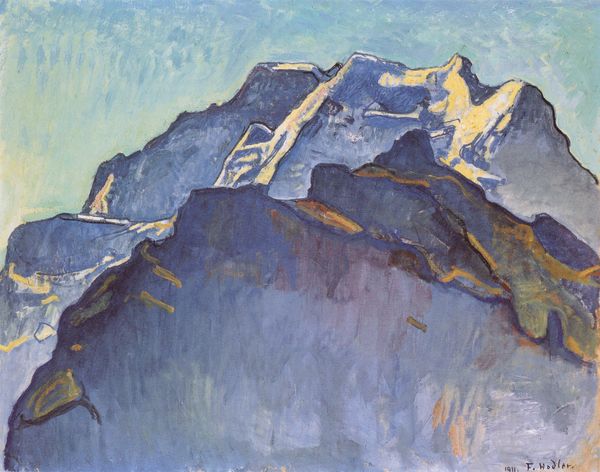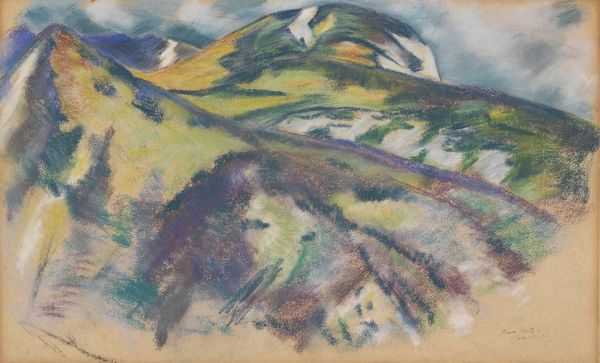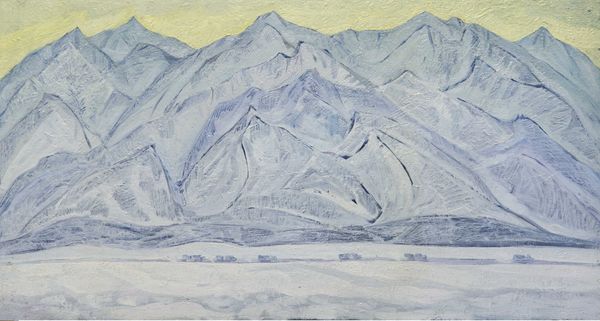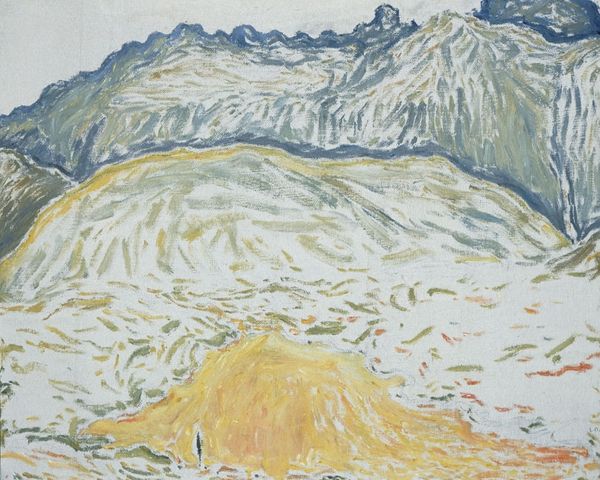
Dimensions: 70.6 × 90.8 cm (27 3/4 × 35 3/4 in.)
Copyright: Public Domain
Editor: So, here we have Marsden Hartley’s "Landscape No. 3, Cash Entry Mines, New Mexico" from 1920, made with oil and tempera. It depicts this striking Southwestern landscape… I’m initially struck by the earthy tones and geometric forms. What are your thoughts on this particular piece? Curator: Hartley's landscapes, especially those from his New Mexico period, really push us to consider the materials and the labor embedded in their creation. Notice the heavy impasto and the visible brushstrokes. This wasn’t about illusionism. Hartley used readily available materials, common paints. What does that say about accessibility and his relationship with the art market? Editor: I guess it emphasizes a connection to the place itself? The local materials and maybe a focus on the everyday rather than something idealized? Curator: Exactly. And look at the “Cash Entry Mines.” These landscapes weren't just picturesque views; they represented specific sites of labor and resource extraction. How do you think the knowledge that the landscape depicts a *working* landscape changes how we view it? Does it invite a different consideration of value? Editor: It does make me think about what’s being taken from the land. And, perhaps, how the painting itself becomes a kind of commodity? Curator: Precisely. It’s all about the intersection of production – from the mining of resources to the making of the art. Understanding the context of its creation can prompt a richer, more critical engagement. Editor: That really makes me reconsider what a landscape painting can represent. Thanks for highlighting all that. Curator: My pleasure. Hopefully, thinking about the processes behind art enriches your experience going forward.
Comments
No comments
Be the first to comment and join the conversation on the ultimate creative platform.
